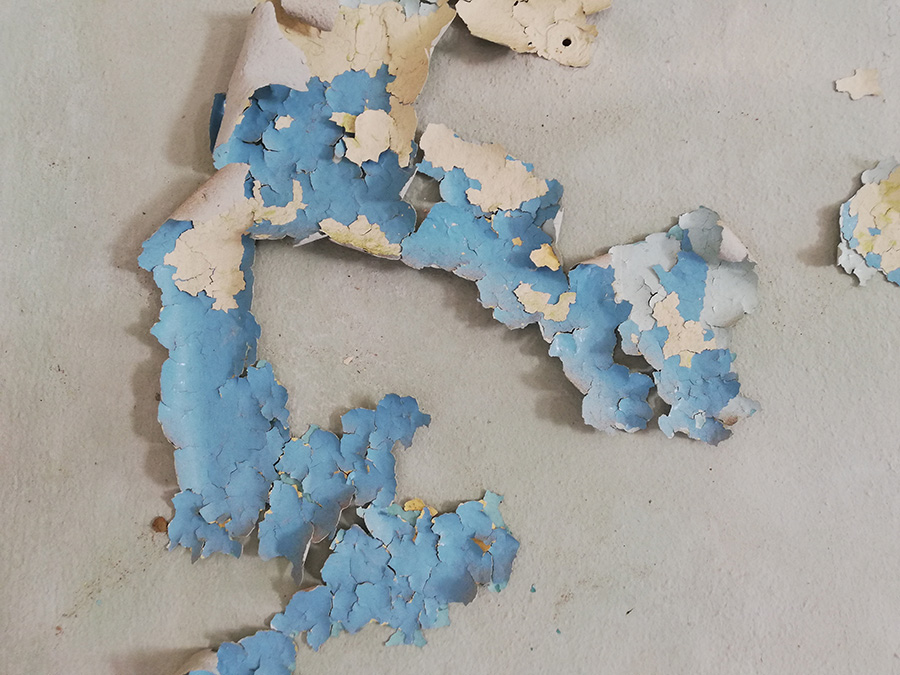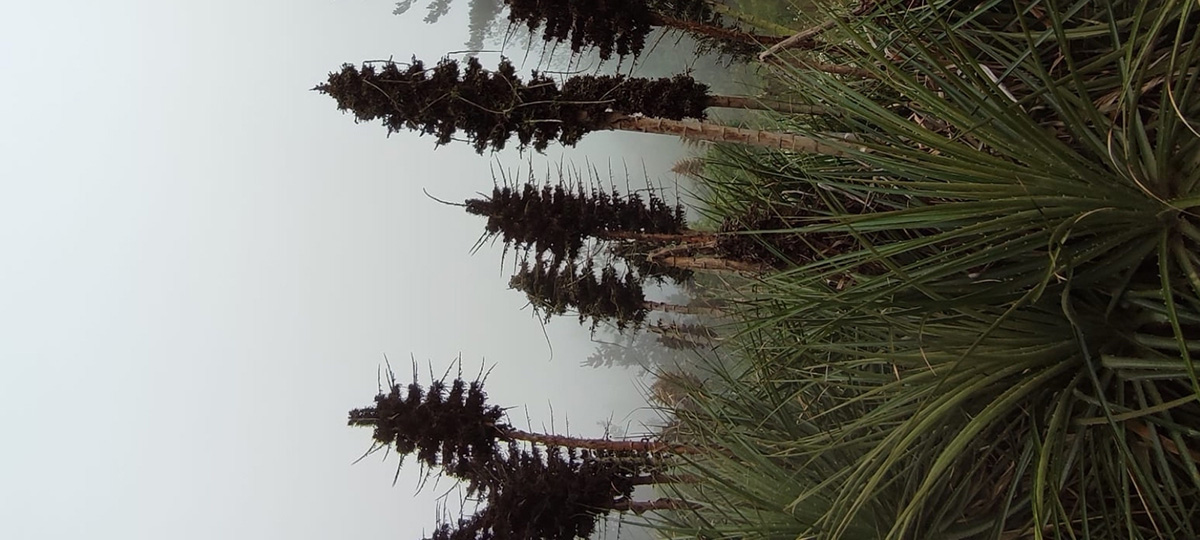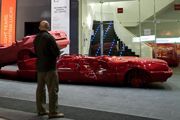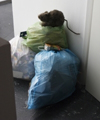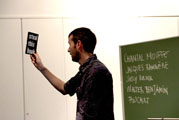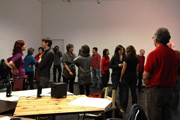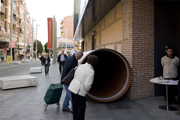Aimed at people with interest in current art. Not necessary any previous art knowledge
Free admission
CA2M proposes with this course a look at the city as a sense production space, a site where much of our experiences can be developed from different disciplines, hybrids and even ambiguous. We want to think about, then, a cultural production which, from a different space than the official one or the hegemonic one, is capable of creating a “bastard” discourse” searching in the city cracks, other means of production. Understanding the public sphere as a plural one, and considering it capable of hosting aesthetic options which are producers of emotions and mobilizers of conflicting passions. Music and Pop, Punk or Techno aesthetics can be understood from that point of view, as engines of intersubjective connections which keep shaping a public sphere even more sophisticated than what Habernas or Hannah Arendt could ever believe.
With Cracks on the Asphalt, CA2M counts with the presence of diverse culture producers and artists to jointly analyze with them, and with some of their proposals, some matters that affect our placing and gazing model within our surrounding. Thinking about aesthetic strategies of activation of our political position, as well as in the creation of affective nets and communities most probably would only be a starting point for debates; thinking about urban as a means of constructing an unique experience, it may reveal new ways of agency, of living and of revolting: another existing rhythms.
Lecturers: Amanda Cuesta, Discoteca Flaming Star, Antoni Hervás, Amparo Lasen and Azucena Vieites.
PROGRAMMING:
WEDNESDAY 31 OCT
Just Dance. Sound space, rhythm and power emergencies
AMPARO LASÉN DÍAZ
During the talk, we will explore diverse examples of contemporary music practices, mainly linked to dance and to the listening of dance electronic music, means of listened music shared on-line or off-line, which embodies different kinds of mediations (choreographies, videos, etc.) in response to the many forms of participation from people, collectives and technologies which generate sound spaces and modulations on the public, where it takes place shared powers in a intermittent and resonant manner.
Amparo Lasén Díaz, professor of sociology at Universidad Complutense of Madrid, Ph. D. at La Sornonne, and researcher at London School of Economics and at Digital World Research Centre from Surrey University. Lasen investigates the usages, practices and presence from new communication and information technologies (mobiles, social media, digital photography) in particular in relation to their participation in the contemporary configuration of subjectivities and affectivities; along with music practices in relation to dance electronic music and the role of technologies which makes and helps to listening to music.
http://ucm.academia.edu/AmparoLasén
WEDNESDAY 7 NOV
COLLAGES. AN APPROXIMATION TO DRAWING, EDITION AND DIY CULTURE.
AZUCENA VIEITES
Drawing as a means of expression along with the edition and the DIY culture techniques, in a dialogue with the feminist thinking, is based Azucena Vieites´s work. Topic of contemporary interest would be raised in a journey throughout her works.
Azucena Vieites is a Spanish artist, who has lately display in solo exhibitions in: Fundido encadenado-Break You Nice, MUSAC, León, Spain (2012) and Coloring Book, Moisés Pérez de Albéniz Gallery, Pamplona, Sapin (2011). She has participated in numerous projects and collective exhibitions and collaborated with her drawings in publications such as New Feminism (Löcker, Viena, 2007) or Dig Me Out . Discourses of Popular Music, Gender and Ethnicity DVD(www.digmeout.org, 2009). She co-founded in 1994 the collective Erreakzioa-Reacción, an initiative between art and feminism featured in fanzines, exhibitions, workshops, seminars, lectures or videos.
WEDNESDAY 21 NOV
Urban Mythologies
ANTONI HERVÁS
Carrying out a drawing apology as a documentary tool and as an expanded milieu to represent the subjective vision from our closest surrounding. A space where the Underground and Pop hold hands to dance a “tied up” transforming the urban space in a psychedelic scenario.
ANTONI HERVÁS, ARTISTA, STUDIED FINE ARTS AT BARCELONA UNIVERSITY. HE WAS AWARDED WITH THE ILLUSTRATION INJUVE PRIZE IN 2010. HE IS DOING A RESIDENCE IN HANGAR. HERVÁS´ SOLO EXHIBITIONS HÉRCULES EN LA LUNA TOOK PLACE AT ESPACIO CULTURAL CAJA MADRID IN BARCELONA, AND IN SITES AS TIENDADERECHA IN BARCELONA AND IN URBAN PROPERTY CHAMBER IN BARCELONA. HERVÁS HAS EXHIBITED IN COLLECTIVE SHOWS AS IN LA CASA ENCENDIDA WITH LO TENGO, NO LO TENGO AT ESPAI ZER01 IN OLOT, OR DRAW, DRAW, DRAW AT MAD IS MAD GALLERY IN MADRID AND CAMBIO DE TURNO AT KKKB GALLERY IN BARCELONA
WEDNESDAY 28 NOV
IN FACT, 12 TIMES ALISSA
FLAMING STAR DISCO
From a tiny theater balcony, in motion bodies carry written texts on their backs. Poems becoming songs, poems that one would rather not have written and songs that talk about everything: about pleasure, fuss, anxiety, birth, death, cities, dawn. In fact, 12 times Alissa.
Cristina Gomez Barrio studied Fine Art in Madrid, Munich, and Berlin. In 2005, She took part of the Whitney Independet Study Program in New York. Cristina draws, photographs, sings, films and acts. In 1998, she founded, together with Wolfgang Mayer under the name Discoteca Flaming Star, an interdisciplinary-artistic performance collective. Discoteca Flaming Star aims at offering a space to artists in search for diverse aesthetic practices. Cristina´s work has been displayed in Museums, plazas, galleries as The Kitchen, Artists Space, Parlour Porjects, Whitney Museum, Performa 2009, NYC; MUMOK, Viena; NBK, Haus der Kulturen der Welt in Berlin; Ojo Atomico, Centro de Arte 2 de Mayo, Madrid; Galería Freymond-Guth, Zürich; Tate Modern, London.
WEDNESDAY 05 DIC
AMANDA CUESTA
Amanda Cuesta, art critic, curator and independent editor, was part of Creatures (1996-2002) experimental curatorial team, developing a range of projects that challenged the traditional exhibition format. Her latest work is based on the creation and the analysis of production structures and platforms as in Processos Oberts and P_O_2_QUEDA LA MARCA (Terrassa, 2004 and 2005) that she coordinated.
She is author of the homonym publication CASM, 2006, centered in the intricacies from the art economy. Amanda´s wager on PAPERBACK publishing house, committed to low-cost editions, aims to extend and to diversify the existing means of art circulation and to popularize a low-cost collectionism. She has published critics in catalogues and specialized magazines as Babelia, Matador, ABC de Arco, Camera Austria, Transversal, Temps d'Art, ArteContexto, Exit or Nexus.
Download Educational Programming 2012 - 2013
